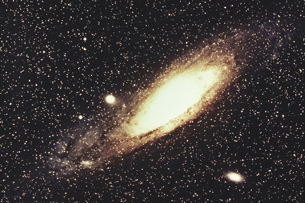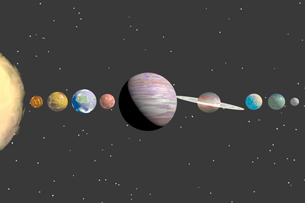Module 5—Circular Motion
 Big Picture
Big Picture

top: © Vincent Giordano/shutterstock
bottom: © Galina Barskaya/shutterstock
How exciting would it be to watch figure skating if it all occurred in a straight line? It might still be fast with jumps, spills, grace, elegance, and showmanship; but, without the spins, it wouldn’t be nearly as exhilarating. How exciting would it be to try a carnival ride that had no twists, no spinning, and no turns? The ride might go fast; but if it could only move in a straight line, it wouldn’t be much fun. What is it about spinning, rotating, or orbiting that makes these experiences more exciting?
As a student of physics, you know that this excitement has to be related to accelerations and forces and other physics concepts. You might even correctly guess that circles come into play. Circles can be small, like a skater doing a scratch spin; circles can be large, like a Ferris wheel or other carnival ride; circles can even be galactic in scale.

© 2007 Jupiterimages Corporation
You can see circular motions almost anywhere you look. Each of the pictures you see here shows an example of circular motion on one scale or another with varying forces and accelerations. Circular motion can occur here on the surface of Earth with Earth’s gravity being an important force. Other times, the circles are far away from Earth and Earth’s gravity plays a much smaller role.

© Risteski Goce/shutterstock
How important do you think Earth is in shaping the orbits of the other planets in the solar system?
The planets, or wanderers of the night sky, intrigued countless generations of astronomers. For a long time, the seemingly inexplicable movements of the planets led to more and more complicated descriptions of their motions. While Galileo expanded people’s understanding of astronomy with the invention of the telescope and while Johannes Kepler formulated laws of planetary motion, you will come back to Isaac Newton’s work to see the first modern explanation of the rules that determined each planet’s place in the sky and the motions of all celestial bodies. The advancement of astronomical studies has been the result of work by a number of scientists—each scientist expanded on the work of a predecessor until arriving at the understandings of today.
In this module you will extend your understanding of Newton’s laws into the realm of circular motion and apply free-body diagrams to help you understand the forces involved in circular motion. You will also see, through a historical perspective, how important careful observations and good data are in the development of an understanding of the universe.
As you work through this module, keep the following questions in mind. They will help you understand the role of acceleration in making the universe, and a lot of things in it, go round and round.
- How do Newton’s first and second laws apply to circular motion?
- What factors affect acceleration during circular motion?
- How do Newton’s laws explain the sensations during vertical circular motion, such as during a loop in a roller coaster?
- What forces come into play during vertical circular motion?
- How did Kepler’s laws help calculate the position of the planets as they orbited the Sun?
- How are planetary and satellite motion explained using universal gravitation and the principles of circular motion?